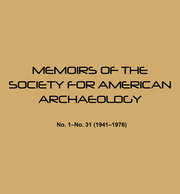No CrossRef data available.
Article contents
III. The Design of the Experiment
Published online by Cambridge University Press: 27 June 2018
Extract
The remainder of this study is designed to determine how a hypothetical region that is archaeologically unknown must be surveyed in order to derive valid conclusions concerning the entire region. This sampling problem can be fruitfully approached by performing an experiment with the data recovered during the Paria Plateau survey. An experiment is necessary because the stated purpose of this study is to refine sampling methods in an empirical manner. Therefore, a maximum of data that can be handled properly under the correct theoretical conditions can be used to answer questions concerning the sampling methodology of archaeological survey. Second, I consider this study experimental in an innovative sense; to my knowledge, the kinds of analyses that will be described in this chapter have only been partially undertaken by other archaeologists (Chenhall 1972; Plog 1972; Judge, Ebert, and Hitchcock 1973).
- Type
- Research Article
- Information
- Copyright
- Copyright © Society for American Archaeology 1974


